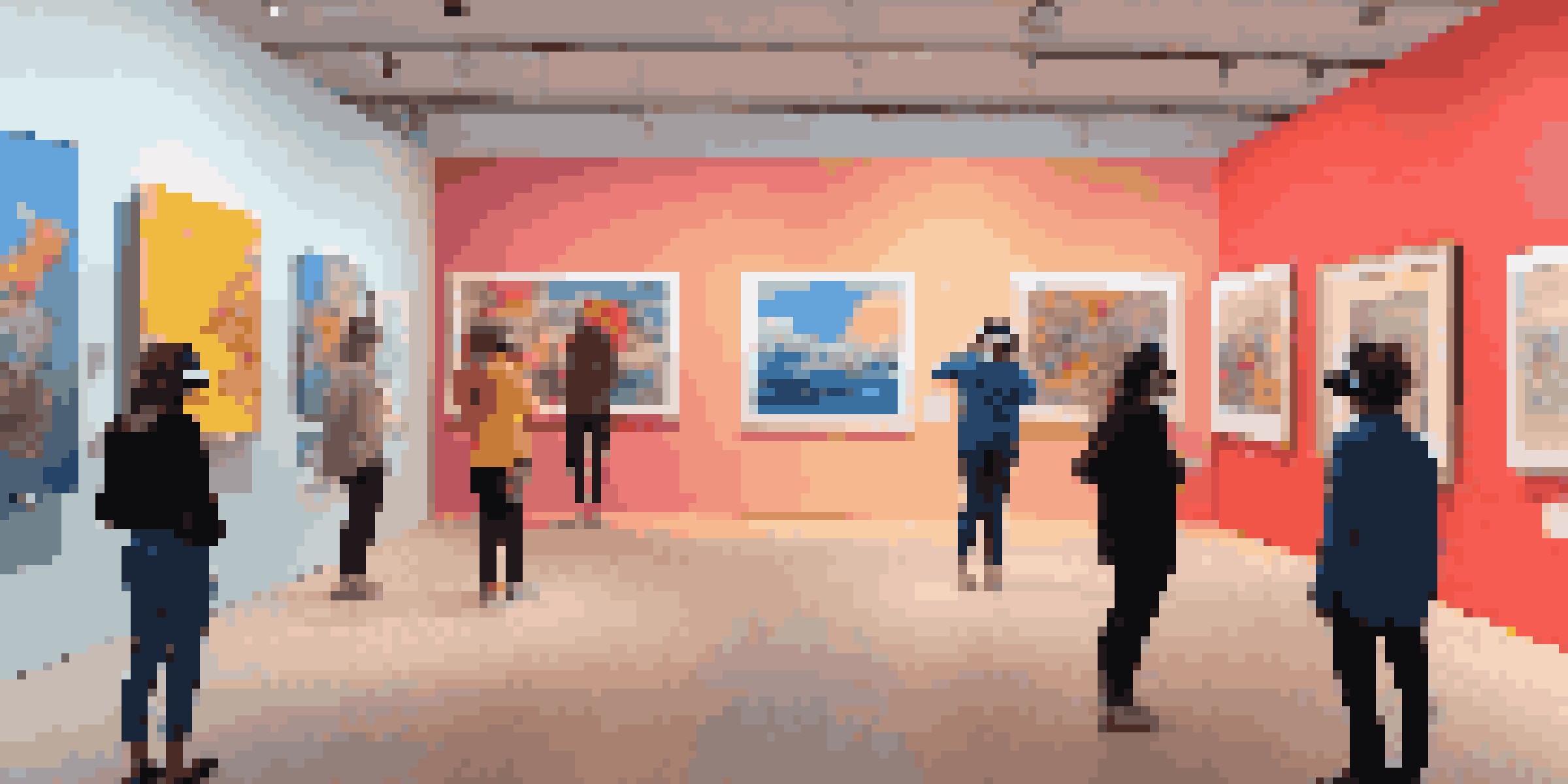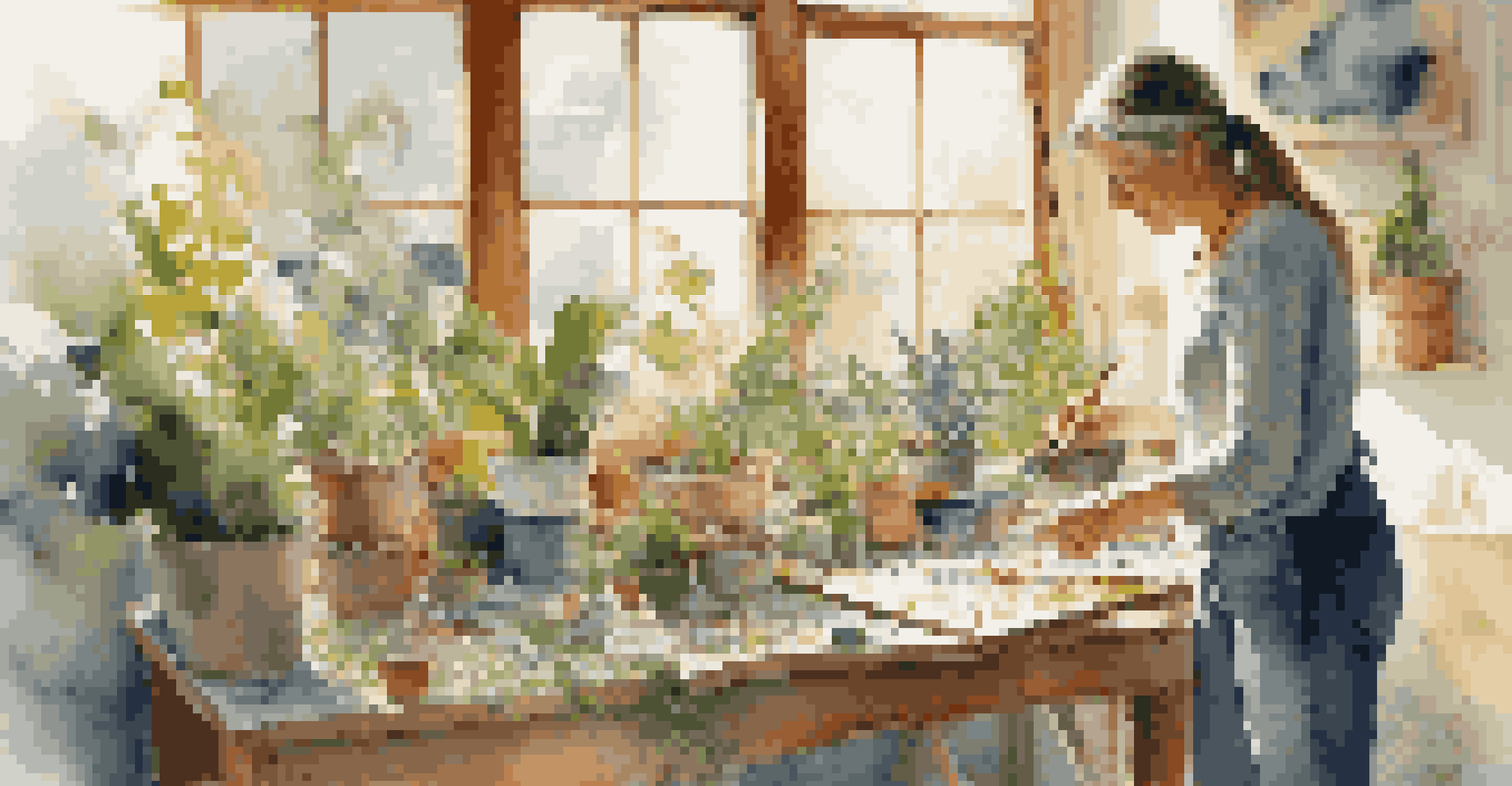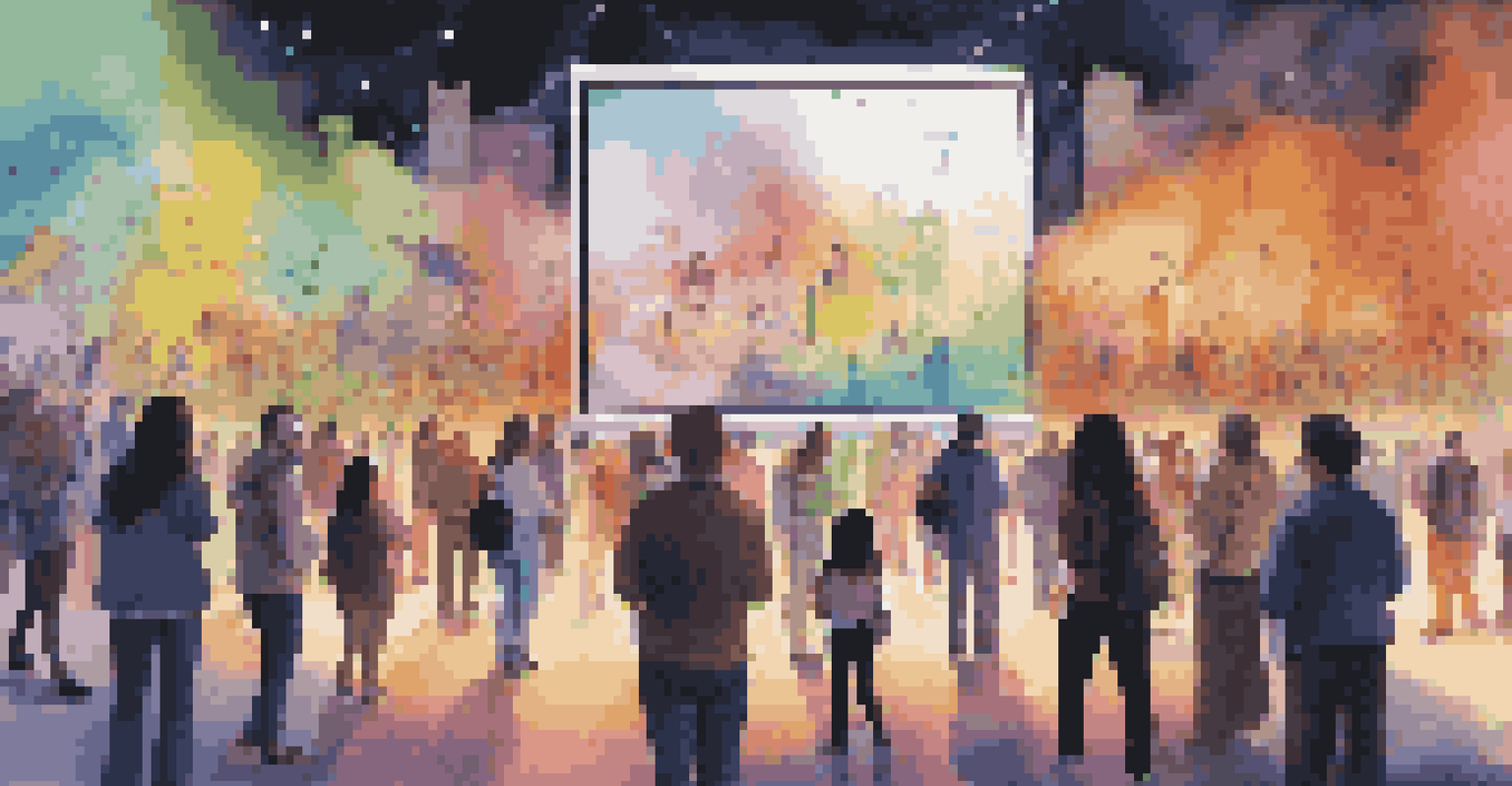Art and the Digital Economy: New Models of Consumerism

The Intersection of Art and the Digital Economy
In today's world, art and the digital economy are intertwined like never before. The rise of digital platforms has transformed how we create, share, and consume art. Artists now have the ability to reach global audiences through online galleries and social media, breaking down geographical barriers.
Art is not a thing; it is a way.
This shift not only democratizes access to art but also allows for a broader range of voices to be heard. Artists can experiment with new formats, from digital installations to interactive experiences, pushing the boundaries of traditional art forms. The result is a vibrant ecosystem where innovation thrives.
As technology continues to evolve, so do the ways we engage with art. Virtual reality exhibitions and augmented reality experiences are becoming commonplace, offering consumers immersive ways to appreciate creativity. This convergence of art and technology is reshaping consumer expectations and experiences.
Understanding New Consumer Behaviors in Art
The digital economy has sparked new consumer behaviors, particularly in how we value and purchase art. Online marketplaces and auction sites have made it easier for consumers to acquire art without the constraints of traditional galleries. This shift has led to a more diverse clientele looking for unique pieces to enhance their personal spaces.

Moreover, consumers are increasingly prioritizing experiences over ownership. Art subscriptions and rental services have gained popularity, allowing individuals to enjoy a rotating collection of artwork without a long-term commitment. This model reflects a broader trend where experiential consumption takes precedence.
Digital Art Expands Global Access
The rise of digital platforms allows artists to reach wider audiences, democratizing access to art and fostering diverse voices.
Social media plays a crucial role in shaping consumer preferences as well. Platforms like Instagram serve as discovery tools, where users can find emerging artists and trending styles, influencing their purchasing decisions. This interconnectedness has created a dynamic landscape where consumer tastes evolve rapidly.
NFTs: Revolutionizing Art Ownership
Non-fungible tokens (NFTs) have emerged as a groundbreaking development in the art world, creating new models of ownership and authenticity. By using blockchain technology, NFTs ensure that digital art can be bought and sold with verifiable ownership, much like physical art. This innovation has opened up fresh avenues for artists to monetize their work.
The future belongs to those who believe in the beauty of their dreams.
NFTs also allow artists to retain royalties from secondary sales, a game-changer in the traditional art market. This means that artists can continue to benefit financially from their creations long after the initial sale. It shifts the power dynamics, allowing artists more control over their intellectual property.
While NFTs have sparked excitement, they've also raised questions about environmental impact and market saturation. However, the potential for digital art to reach a wider audience remains significant, sparking ongoing discussions about the future of art consumption in the digital age.
Art as a Means of Digital Engagement
Art is increasingly being used as a tool for digital engagement, connecting brands with consumers on a deeper level. Businesses are collaborating with artists to create unique campaigns that resonate with audiences, blending artistic expression with marketing strategies. This fusion not only enhances brand identity but also enriches consumer experiences.
Interactive art installations and digital experiences are becoming popular at events and exhibitions. These immersive encounters allow consumers to engage with brands in meaningful ways, creating lasting memories. By integrating art into consumer experiences, brands can foster emotional connections that traditional advertising struggles to achieve.
NFTs Redefine Art Ownership
Non-fungible tokens (NFTs) leverage blockchain technology to create verifiable ownership, enabling artists to retain royalties and control over their work.
Additionally, the rise of user-generated content has blurred the lines between artists and consumers. People are encouraged to create and share their own interpretations of art, contributing to a collaborative culture that celebrates creativity. This shift is transforming how we perceive the role of the consumer in the art ecosystem.
The Role of Social Media in Art Consumption
Social media platforms have revolutionized how art is consumed and appreciated. Artists can share their work instantly, gaining exposure and feedback from a global audience. This immediate connection fosters a sense of community and allows for real-time engagement with fans and potential buyers.
Platforms like Instagram and TikTok have become vital for artists' marketing strategies. Visual content thrives on these platforms, allowing artists to showcase their process, share behind-the-scenes glimpses, and connect with their audience authentically. This personal touch can significantly influence consumer interest and purchasing decisions.
Moreover, social media has democratized art criticism, enabling diverse voices to participate in discussions about artistic merit and relevance. This shift has created a more inclusive art community, where everyone can share opinions and contribute to the dialogue. As a result, consumers are more empowered than ever to shape the art landscape.
The Impact of Virtual Reality on Art Experiences
Virtual reality (VR) is reshaping how we experience art, providing immersive environments that transport us beyond traditional gallery visits. With VR, consumers can explore art in innovative ways, walking through virtual galleries and interacting with pieces on a deeper level. This technology makes art accessible to those who may not be able to visit physical spaces.
Additionally, VR can enhance storytelling within art. Artists can create narratives that unfold as viewers navigate through virtual worlds, deepening emotional connections. This immersive storytelling approach not only captivates audiences but also invites them to engage with art on a personal level.
Sustainability in Art Matters
As consumers become more environmentally conscious, artists and brands are adopting sustainable practices to meet ethical expectations in the art world.
As VR technology becomes more mainstream, we're likely to see an increase in virtual exhibitions and experiences. This evolution will further blur the lines between physical and digital art consumption, challenging traditional notions of what art can be and how we experience it.
Sustainability and Ethical Considerations in Art Consumption
As the digital economy continues to evolve, sustainability and ethical practices are becoming increasingly important in the art world. Consumers are more aware of the environmental impact of their purchases, prompting artists and brands to adopt eco-friendly practices. This shift encourages a more responsible approach to art production and consumption.
Many artists are now exploring sustainable materials and methods, emphasizing the importance of reducing waste in their creative processes. This commitment to sustainability not only appeals to conscious consumers but also aligns with a broader cultural shift towards environmental responsibility.

Moreover, ethical considerations extend beyond environmental issues; they also encompass fair treatment of artists and transparency in the art market. Consumers are demanding more information about the origins of the art they buy and how artists are compensated. This trend is fostering a more ethical art ecosystem that values both creativity and integrity.